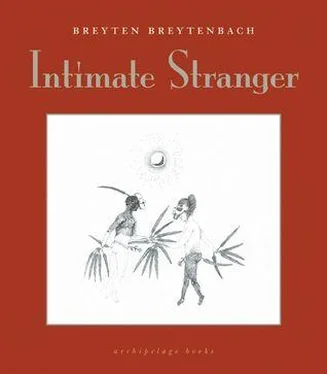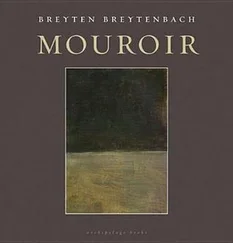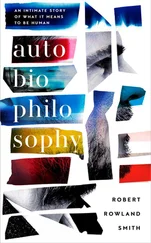upon my shoulders. The rain was outside.
Out there was such a rush and rattle of rain
that no footsteps could be heard on the roof.
My window was open to the waterfall of sky
but I at bay in my moth-whispered cloak,
wrapped in wings with no memory of flying
The act of creativity is the beginning of unleashing metamorphosis, of putting something out there, of starting a process. We become aware of the implications of tangling with matter, of engaging others. In the ‘making of things’ (stories, poems) we shape identities, we forge links between aesthetics and ethics, we learn about the importance of an environment within which rhythms and resonance can take on meaning, we begin to understand about embellishing the existent, we reach out to the supposed non-existent, we bring new light to known objects. It makes it possible for us to imagine transitions and bring together the discrete in a plausible bounded mirage of purport. After all, the collection comes into being because of the collector. On condition that you remember the fact that your vision is only one possible way of seeing, collecting, and thus of making. One must not confuse the finger with the moon.
It was painting that made me aware of the thingness of creations, of the object’s ‘own language,’ with logic and internal references and therefore history, of the similarly explosive functions of metaphor and image, and that meaning will be secreted from the dialectical game of look-alike-alive components which, when drawing in the reader or onlooker or listener, provoke the illusion of movement and thus become process: rhythm, pattern, space, reference, harmony, dissonance, repetition, obliteration, the color underneath, texture, structure, jump, break, fuck-up. . (Thing as process and not as product , now that’s democracy for you as opposed to the fascism of making of everything a commodity!) For ultimately this: the process (and its mirror — poem, painting) is the matter of awareness for both maker and taker. Montaigne says: “Je ne peins pas l’être, je peins le passage.” I don’t paint the being, but the going.
Meaning (if we reduce it to its regular orotund ontogenesis, if we search only for its semantic delimitations) is the thin sop of communication, of ‘lay there and don’t move’; it is old Mister Unum, the One-God in whose name we fly into towers or drop bombs from dizzying heights; it is language as authoritarian structure. Monotheism as avatar of Meaning must by its essential and founding premise be jealous, totalitarian and intolerant. .
To be looking at the thing or the group of words though, as they get a move on, is to be aware of an image (a presence) behind the interacting combination and composition of components, a kind of hole in the mirror. It is to become two, onlooker and doer, because it is a self-confrontation. Since most of us do not have access to Chinese ideograms with their radicals (roots) and word-pictures where the dichotomy I’m referring to is both more evident and nullified, and as we no longer practice the arabesques and humming thinking and word-for-every-thing-and-dream and image-for-each-thought of oral traditions, we risk walking into the abstract, into the trap of the written word. As the convention of meaning became the supreme norm, the autonomous movements of the means to expression faded in the eye; we forgot that ‘meaning’ can only offer us the appearances of preserving perception and keeping awareness. Reality however (and the words impregnated by it), is different: it is rot, chewing gum, the implosion of singular meaning, the multiplication of loaves and fishes. Meaning made it impossible for us to sleep with truth, where we twin to be one fugacious orgasm.
Writing is an acquisition (of words, understanding, attitudes); ideally it is also a process of skinning and of dismantling (of attitudes, understanding, words). Because possessions can be inhibiting. To take leave of that which forms attachments leads to a progressive reduction of the I, and this will allow the mind to expand and become more vacuous. You need to be involved simultaneously with the walking and the final destination. That is why the Zen master Dōgen suggested we should live as if we were the Buddhas we already are: to sit and listen to the uninterrupted news of silence, part of the imageless action, and thus experience all-ness. And, because one is anyway part of it, to reach immobility within movement and play inside immobility. Our whole being should be as a lung: when breathing out you open and become emptied and the interior flows away and perishes so that you are at one with the totality, the void; when inhaling everything around you and outside you enters to become part of you. There are thus two movements, a duality, a come and a go — both integrated in the coming-and-going, so that there can be movement without movement, an un-danced dance, quietness without stopping. Everything/reality is a lung and you are being inhaled and exhaled.
It is truly a dance. You and your ultimate opponent, the shadow-self, move together like water in the wind. Keep the neck straight; it must be as if the crown of your head were attached to a navel string from heaven; and when you lift your hands, like this, feel then the wrists hoisted by threads: when you open your palms upward you must be holding twin birds, which can neither stay nor fly away. Relax the belly, particularly the hip joints, straighten your back without stiffening: the chi should circulate freely — when it is not hindered you will experience the palms of your hands becoming warm as if a mild breath blew against them, ruffling the birds’ feathers.
In the mind also, you become aware of space when it is suggested neither by the presence nor the absence of objects but by their ending ( nirodha ). A triangle is not circumscribed by three lines but by the three edges where triangularity breaks off.
Like this you are unconsciously concentrated, on your guard and ready without any rigidity. And like this too, in your writing, you will obtain the ‘relaxed tension’ of a flowing alertness. You will need it as you see your text taking body, in order not to take fear. Because you are finally your own enemy.
Writing through the ‘self,’ whoever she may be, need not be a limitation (and I have suggested elsewhere that one is always walking the road of “writing the self and rewriting the world” — that is, you invent the self and reshape the observed outside and other out there to some form of understanding). We are writing from nothingness, at best through ‘self’ as conduit of consciousness, while we all carry within us an infinity of characters and mutations and stories. The mind-hand combination — here I again equate ‘hand’ with ‘writing’ — operates like a mirror, which can be held up to all kinds of situations and to all four faces of the earth.
A beautiful woman I once knew (her name was Leah), who lived the pain of not writing her life, referred to this infinity of openings as “the nation of images.” (I bring her into this unmade text as into my soiled bed because movement knows no hierarchy.) You may be reticent about what to use, sensitive about impairing your relations with people close to you, of staining the sheets of paper, but for all practical purposes you are quite an unscrupulous magpie, filching whatever shiny object attracts the attention. What goes into the word-grinder is, as well, the writing itself — I mean, the fact (or fiction) of leading a writing life. As you use your senses to mediate the world in which you move, so you employ writing as a further sense — both to correlate the physical ones and to negotiate some kind of peace process between your fortified experiences or prejudices and the nascent ‘self’ as liberation movement.
Читать дальше












